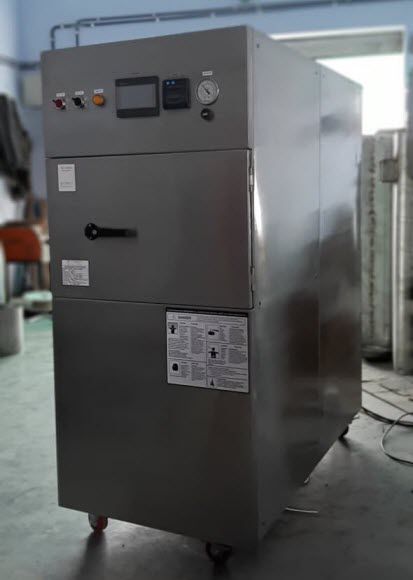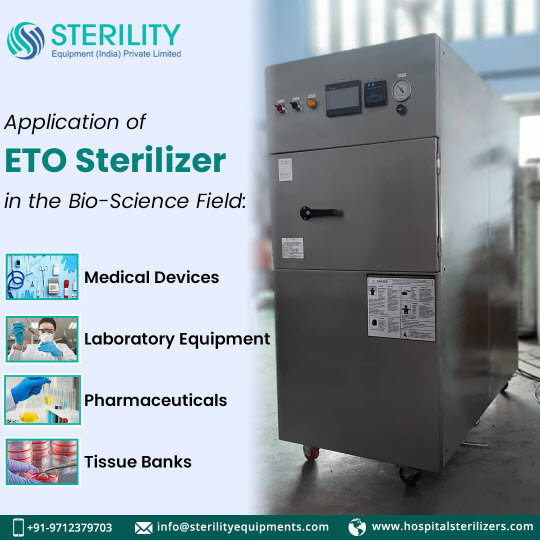Japan’s ETO sterilizer market is currently undergoing a period of substantial growth, primarily fueled by the escalating demand for sterile medical equipment and supplies. The country’s robust healthcare infrastructure and the increasing emphasis on infection control have further accelerated the adoption of ETO sterilizers across various healthcare facilities.
The rising awareness of the importance of infection prevention has been a driving force behind the surge in demand for ETO sterilizers in Japan. As healthcare providers and medical professionals strive to maintain the highest standards of patient safety, the need for effective sterilization solutions has become paramount.
Moreover, the ongoing advancements in healthcare infrastructure have allowed for the integration of state-of-the-art sterilization technologies, making the process more efficient and reliable. The implementation of automation and IoT integration in ETO sterilizers has streamlined operations and improved overall performance.
Furthermore, the COVID-19 pandemic has underscored the significance of infection control measures, leading to increased investments in healthcare facilities and the adoption of advanced sterilization techniques. As a result, the demand for ETO sterilizers is anticipated to maintain an upward trajectory in the coming years.

Advancements in ETO Sterilization Technology
Recent advancements in ETO sterilization technology have brought about a significant revolution in the field of medical device sterilization. The integration of automation, IoT (Internet of Things) integration, and precise control mechanisms has ushered in a new era of efficiency and reliability in the sterilization process.
The automation of ETO sterilization processes has led to reduced human intervention, minimizing the risk of errors and enhancing overall operational efficiency. Automated systems ensure consistent sterilization cycles, resulting in reliable outcomes and increased productivity.
Moreover, the incorporation of IoT integration has empowered ETO sterilizers with real-time monitoring and data analytics capabilities. This enables medical professionals to remotely monitor sterilization processes, ensuring optimal performance and the ability to promptly address any issues that may arise.
The precision and accuracy of control mechanisms in modern ETO sterilizers have further elevated their effectiveness. These systems maintain tight control over critical parameters such as temperature, humidity, and exposure time, ensuring thorough sterilization while preserving the integrity of delicate medical devices.
The Role of Government Regulations
Government regulations have a critical and influential role in shaping Japan’s ETO sterilizer market. Stringent safety and quality standards mandated by regulatory bodies create a framework within which manufacturers must operate. Compliance with these regulations is not only mandatory but also drives manufacturers to innovate and offer products that meet the highest standards of safety and reliability.
The primary objective of government regulations in the ETO sterilizer market is to safeguard public health and ensure the efficacy of sterilization processes. By setting specific requirements and guidelines, regulatory bodies create a level playing field for manufacturers and promote fair competition while prioritizing patient safety.
Government regulations also play a vital role in ensuring transparency and accountability within the ETO sterilizer market. Manufacturers are required to provide detailed documentation and data about their sterilization processes and product performance. This information is crucial for healthcare providers and end-users to make informed decisions about the adoption of specific ETO sterilizers.
Moreover, compliance with government regulations instills trust and confidence among consumers and healthcare professionals. When ETO sterilizer manufacturers meet or exceed safety and quality standards, it enhances their reputation in the market and bolsters their credibility as reliable suppliers.
Rising Importance of Infection Control in Japan’s Healthcare Facilities
Infection control has emerged as a paramount concern for healthcare facilities in Japan. The increasing awareness of the impact of hospital-acquired infections (HAIs) on patient outcomes has prompted healthcare providers to prioritize stringent infection control measures. As a result, the ETO sterilizer market is experiencing significant growth, as these sterilizers play a crucial role in preventing the spread of infections and ensuring patient safety.
Hospital-acquired infections can lead to severe complications, prolonged hospital stays, and increased healthcare costs. The emphasis on infection control is driven by the desire to minimize such adverse events and improve patient care outcomes. Healthcare facilities are investing in advanced sterilization technologies like ETO sterilizers to maintain a sterile environment and reduce the risk of HAIs.
The outbreak of infectious diseases, such as the COVID-19 pandemic, has further underscored the importance of infection control measures. Healthcare providers have recognized the need for rapid and effective sterilization processes to protect both patients and healthcare workers. ETO sterilizers, known for their ability to efficiently sterilize a wide range of medical devices and equipment, have become an essential asset in the fight against infectious diseases.
Furthermore, regulatory bodies in Japan have implemented guidelines and standards to ensure the implementation of infection control practices. Compliance with these regulations is not only a legal requirement but also essential for maintaining a high standard of patient care. ETO sterilizers, meeting the strict safety and quality standards, are an integral part of healthcare facilities’ infection control protocols.

Expanding Applications in Pharmaceutical Industry
The pharmaceutical industry in Japan is witnessing a notable adoption of ETO sterilization for diverse applications, particularly in drug manufacturing and packaging processes. The technique’s exceptional ability to maintain product integrity and ensure safety has driven its widespread integration, transforming pharmaceutical processes and enhancing product quality.
In drug manufacturing, maintaining the sterility and purity of pharmaceutical products is of utmost importance. ETO sterilization offers a highly effective method to eliminate microbial contaminants from equipment, containers, and packaging materials. By ensuring the complete eradication of harmful microorganisms, ETO sterilization plays a vital role in preserving the integrity and efficacy of pharmaceutical drugs.
Packaging is another critical aspect of drug quality, and ETO sterilization has become an indispensable step in ensuring the safety and sterility of pharmaceutical packaging materials. By treating packaging components with ETO, manufacturers prevent any potential contamination that may occur during the packaging process, safeguarding the products from external impurities.
As the pharmaceutical industry continues to grow and advance, ETO sterilization’s significance will only increase. The technique’s reliability and efficacy in maintaining product quality and safety make it an indispensable component of modern pharmaceutical manufacturing and packaging processes. Moreover, as the industry evolves, ETO sterilization technology is expected to continue innovating and improving, further bolstering its role as a critical aspect of pharmaceutical operations.
Future Prospects and Opportunities
The future of the ETO sterilizer market in Japan appears highly promising, poised for significant growth and expansion. As the healthcare sector continues to evolve and expand, the demand for reliable and effective sterilization solutions is expected to soar, presenting numerous opportunities for market players.
One of the key factors driving the market’s growth is the increasing emphasis on patient safety and infection control. Healthcare facilities are continuously seeking advanced sterilization technologies like ETO sterilizers to ensure a sterile environment and minimize the risk of hospital-acquired infections. As this awareness of infection control measures becomes more ingrained in the healthcare industry, the demand for ETO sterilizers is likely to experience steady growth.
The advancements in medical technology and the introduction of innovative medical devices are also expected to fuel the demand for ETO sterilizers. These sterilizers are crucial for ensuring the safety and efficacy of sophisticated medical equipment, contributing to improved patient outcomes.
Moreover, the ongoing developments in healthcare infrastructure, particularly in Japan, will contribute to the expansion of the ETO sterilizer market. The establishment of new healthcare facilities and the modernization of existing ones will create a robust demand for cutting-edge sterilization solutions to meet the increasing needs of the healthcare industry.
Strategic collaborations between ETO sterilizer manufacturers and healthcare providers will present valuable opportunities for market expansion. By working closely with healthcare institutions, manufacturers can better understand their specific needs and tailor their sterilization solutions accordingly. Such collaborations will lead to the development of customized and efficient sterilization systems, cementing long-term partnerships and market growth.
Additionally, as the importance of eco-conscious practices continues to rise, there will be a growing demand for eco-friendly ETO sterilizers. Manufacturers offering environmentally friendly solutions will have a competitive advantage, attracting environmentally conscious healthcare facilities.





